Section 1 | Colostrum Management in Dairy Calves
Page 04 /
How Do I Achieve Successful Passive Transfer?
Passive transfer is considered successful when a sufficient amount of immunoglobulins are absorbed into the bloodstream to protect against disease.
To achieve this, there are four critical components that need to be evaluated1:
- The amount of colostrum fed (Quantity)
- The Quality of colostrum fed
- How Quickly colostrum is fed
- The Cleanliness of colostrum fed
Another key component is Quantifying the success of the colostrum management program through taking blood samples from calves and measuring the level of protein present in their blood shortly after birth.
The Code of Practice for the Care and Handling of Dairy Cattle requires that calves receive at least 4 L of good quality colostrum as soon as possible, and no more than 6 hours after birth.
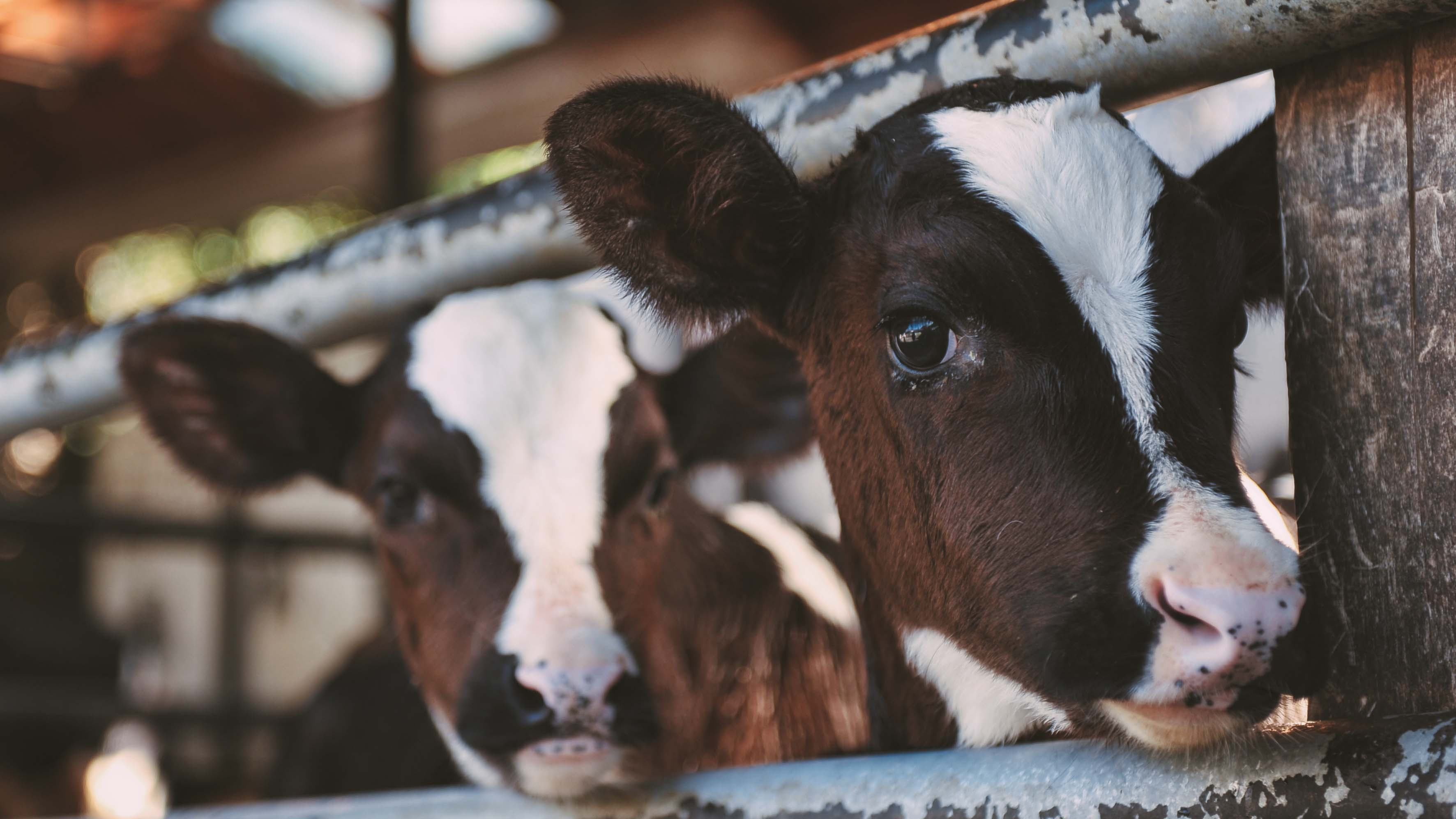
Quantity of Colostrum
For successful passive transfer of immunity, calves need to receive about 100 g of immunoglobulin G (IgG) from colostrum at their first feeding after birth2. To achieve this approximately 8.5% to 10% of the calf’s body weight should be provided. This translates to 3-4 L for average sized Holstein calves3,4.
Quality of Colostrum
The quality of colostrum is defined by the amounts of immunoglobulins contained within it. A level of >50 g/L of IgG indicates high quality colostrum5.
Quality Can Be Quantified!
When it comes to quality, the most significant management change that should be implemented is to ensure that only high-quality colostrum is being fed, and poor quality is being discarded. This can be done by testing all colostrum collected to ensure it is high quality prior to feeding.
There are two tools that can be used on-farm:
Brix refractometer6
- >22% on the Brix scale indicates the colostrum is high quality
Colostrometer7
- >80 mg/mL is the suggested cut off for determining the colostrum that is high quality
- This means the bobber will float in the green zone
- The colostrometer is temperature sensitive, where it is most accurate at room temperature
- Lower temperatures will lead to overestimation of the amount of immunoglobulins in the colostrum, whereas, high temperatures will underestimate the amount of immunoglobulin present
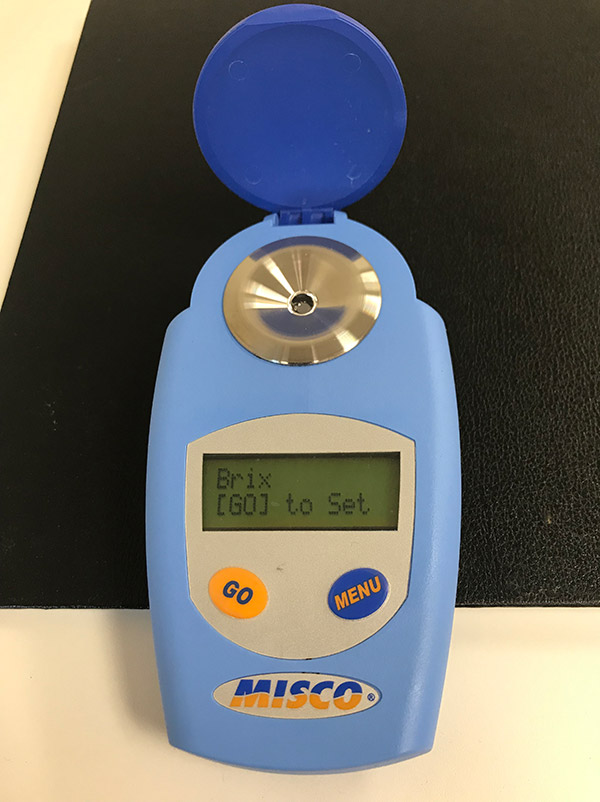
Source: ACER Consulting Ltd.
What Do I Do if My Colostrum is Poor Quality?
If >10% of the colostrum samples tested are of poor quality (<22% on the Brix refractometer or <80 mg/mL on the colostrometer), factors affecting quality need to be explored with your veterinarians.
Specifically, the following areas with respect to lactating and dry cattle should be evaluated2:
Time of milking of colostrum relative to calving
- The longer the delay in colostrum collection, the lower the concentration of IgG
Diet prior to calving
- Ensure properly balanced to prevent feeding excess energy and mineral deficiency to dry cows
Number of lactations
- Cows that are in their third lactation or greater have better colostrum quality because they will have developed immunity to a wider range of pathogens
Dry cow period length
- Ensure the dry cow period is longer than 5 weeks before calving as colostrum production begins at that time
Heat stress
- Cows that experience heat stress will produce poorer quality colostrum
Vaccination of cow
- Vaccinating cows 3-6 weeks prior to calving will increase the amount of immunoglobulins in the colostrum against specific pathogens being vaccinated against
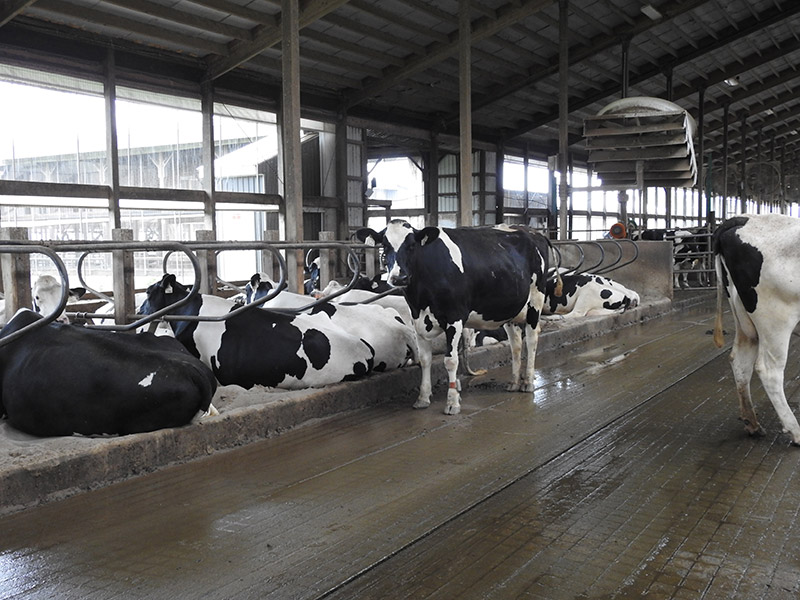
Source: ACER Consulting Ltd.
It is also important to note that the volume of colostrum produced is not a factor leading to poor quality colostrum. Colostrum should be discarded if it has been tested and measures <22% on the Brix refractometer, or <80 mg/mL on the colostrometer (yellow or red zones), not based solely on the volume produced. Feeding high quality colostrum will prevent calf illness, and calves that are not challenged with disease during calfhood do not require antimicrobial treatments.
Quickness of Colostrum Feeding
Colostrum needs to be fed as quickly as possible after birth! Immunoglobulins need to be absorbed across the intestine to protect against disease. The ability of immunoglobulins to cross the intestines declines rapidly over time, where for every hour delay in feeding the first meal of colostrum after birth, leads to a 13% increase in the risk of failure of passive transfer of immunity8. As a result, it is recommended to feed calves as soon as possible after birth, ideally before 4 hours of age.
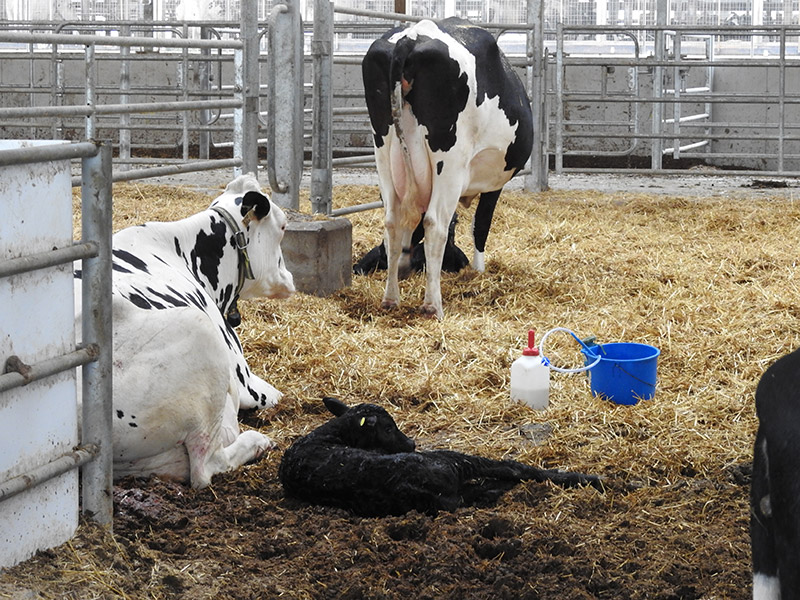
Source: ACER Consulting Ltd.
Feeding Clean Colostrum
Contamination of colostrum with bacteria can have implications on calf health and the absorption of immunoglobulins. If bacteria is found within colostrum, it will bind to the immunoglobulins and prevent them from being absorbed2. This will lead to a higher level of failure of passive transfer. Contaminated colostrum contains bacteria such as Escherichia coli and Salmonella which can also increase the risk of diarrhea and septicemia (think of those calves that become ill with diarrhea very shortly after birth). The provision of only colostrum collected from properly prepared udders into thoroughly cleaned collection buckets will reduce contamination and prevent the introduction of bacteria into the calf’s bloodstream.
An ounce of prevention is worth a pound of cure!
Cleanliness Can Be Quantified!
The evaluation of colostrum cleanliness can be done routinely where samples of as-fed colostrum (or colostrum collected out of the feeding equipment as it would normally be offered to the calf) are collected and measured. Colostrum cleanliness is measured by culturing a sample and determining how much total bacteria is present, as well as how much coliform bacteria is present. The presence of coliform bacteria suggests that fecal contamination has occurred.
If colostrum is contaminated with bacteria (>100,000 colony forming units (cfu)/mL total bacterial count and/or >10,000 cfu/mL total coliform count), the following factors should be evaluated to identify factors responsible for the contamination9:
Udder preparation
- Preparation should be the same procedure as would be done for milking
Cleanliness of collection bucket
- Often the collection bucket is responsible for the greatest amount of bacterial contamination
Colostrum storage
- If colostrum is stored at room temperature, bacteria can multiply rapidly. It’s important to either feed the colostrum right after collection or place it in the fridge or freezer. Bacteria will also grow in refrigerated colostrum and it should only be kept for 48 hours before discarding
Cleanliness of feeding equipment
- Keeping feeding equipment well sanitized will prevent the introduction of bacteria to calves in their colostrum feeding
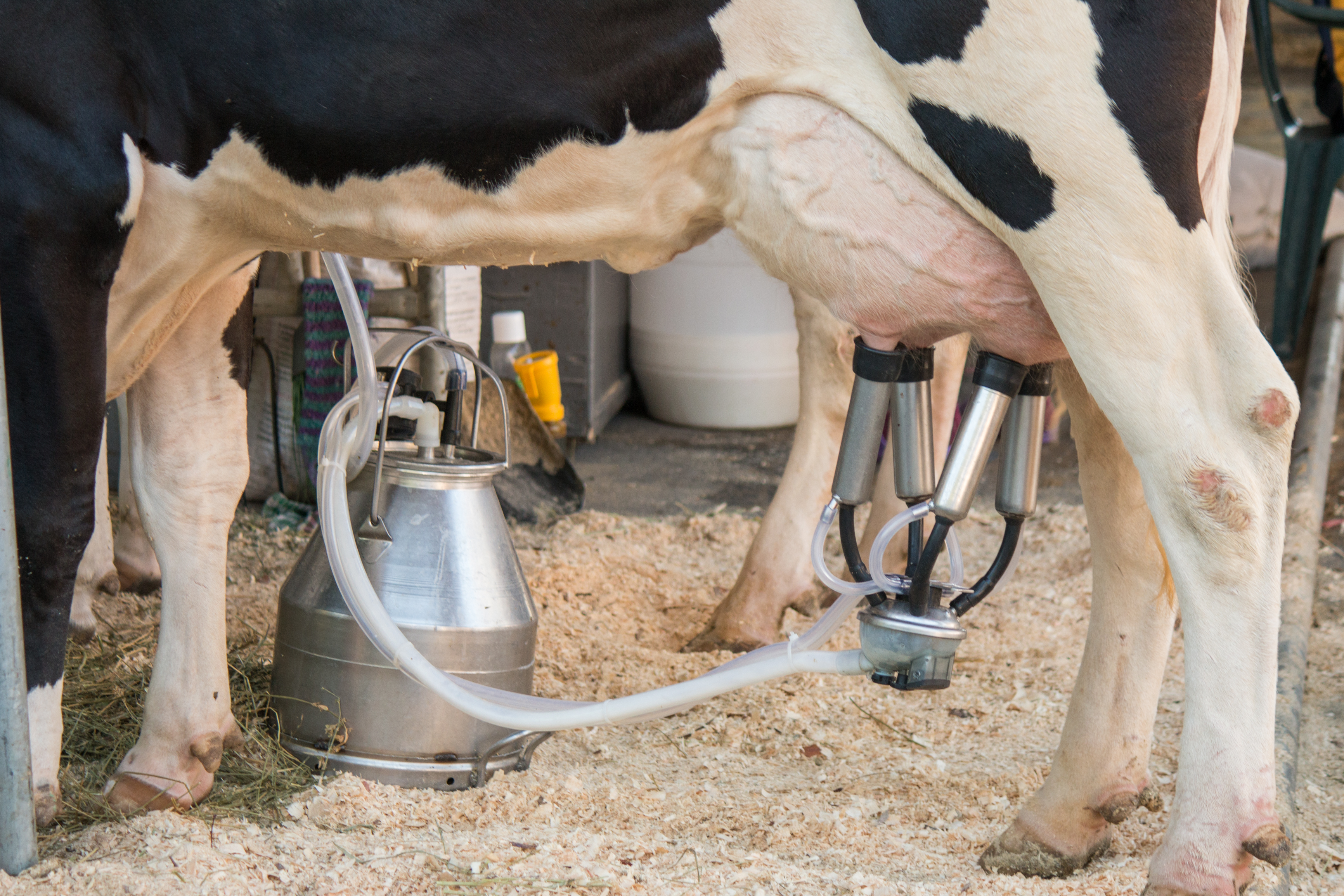
Work with your veterinarian to determine how colostrum cleanliness should be evaluated on your farm
Quantifying Success of Colostrum Management
It is extremely important to generate information to evaluate how successful your colostrum management program is on your farm. One of the best and most practical ways to do this on your farm is to collect total proteins.
What is Serum Total Protein and How is it Collected?
Serum total protein is a measure of the amount of protein in blood, and the levels of serum total protein are an excellent marker of the success of the overall colostrum management program. The reason for this is serum total protein is extremely well correlated with the level of immunoglobulins in the bloodstream.
Serum total protein is collected by taking a blood sample from calves that are 1-9 days of age. The blood is then spun using a centrifuge and the resulting serum is put on a refractometer to measure the level of total protein. If you have a Brix refractometer, it is possible to use the same instrument to analyze total protein samples and collect information on the rate of failure of passive transfer in your herd.

Source: ACER Consulting Ltd.
What is the Target for Serum Total Protein?
The target for serum total protein is >5.2 g/dL10. Any calf that has a serum total protein value of <5.2 g/dL is considered to have failure of passive transfer. This means that the transfer of maternal immunoglobulins to the calf through colostrum to develop that calf’s passive immune system did not occur sufficiently. This can lead to an increased disease risk. These results should be used on a herd-level, where if more that 20% of calves have failure of transfer of passive immunity, a colostrum management change should be made. It is also important to ensure that a critical mass of calves, at least 12 calves, have serum total protein determined before changes are made.
References
- Raboisson, D., P. Trillat, and C. Cahuzac. 2016. Failure of Passive Immune Transfer in Calves: A Meta-Analysis on the Consequences and Assessment of the Economic Impact. PLOS ONE.
- Godden, S. 2008. Colostrum management for dairy calves. Vet Clin NA: Food Anim. Prac. 24:19-39.
- Shively, C.B., J.E. Lombard, N.J. Urie, D.M. Haines, R. Sargent, C.A. Kopral, T.J. Earleywine, J.D. Olson, and F.B Garry. 2018. Preweaned heifer management on US dairy operations: Part II. Factors associated with colostrum quality and passive transfer status of dairy heifer calves. J. Dairy Sci. 101:9185-9198.
- Conneely, M., D.P. Berry, J.P. Murphy, I. Lorenz, M.L. Doherty, and E. Kennedy. 2014. Effect of feeding colostrum at different volumes and subsequent number of transition milk feeds on the serum immunoglobulin G concentration and health status of dairy calves. J. Dairy Sci. 97:6991-7000.
- McGuirk, S.M., and M. Collins. 2004. Managing the production, storage, and delivery of colostrum. Vet. Clin. North Am. Food Anim. Pract. 20(3):593-603.
- Bielmann, V., J. Gillan, N.R. Perkins, A.L. Skidmore, S. Godden, and K.E. Leslie. 2010. An evaluation of Brix refractometry instruments for measurement of colostrum quality in dairy cattle. J. Dairy Sci. 93:3713-3721.
- Bartier, A.L., M.C. Windeyer, and L. Doepel. 2015. Evaluation of on-farm tools for colostrum quality measurement. J. Dairy Sci. 98:1878-1884.
- Lora, I., A. Barberio, B. Contiero, P. Paparella, L. Bonfanti, M. Brscic, A.L. Stefani, and F. Gottardo. 2018. Factors associated with passive immunity transfer in dairy calves: combined effect of delivery time, amount and quality of the first colostrum meal. Animal. 12:1041-1049.
- Stewart, S., Godden, S., Bey, R., Rapnicki, P., Fetrow, J., Farnsworth, R., Scanlon, M., Arnold, Y., Clow, L., Mueller, K. and Ferrouillet, C. (2005). Preventing Bacterial Contamination and Proliferation During the Harvest, Storage, and Feeding of Fresh Bovine Colostrum. J. of Dairy Sci. 88(7), pp.2571-2578.
- Buczinski, S., E. Gicquel, G. Fecteau, Y. Takwoingi, M. Chigerwe, and J.M. Vandeweerd. 2017. Systematic review and meta-analysis of diagnostic accuracy of serum refractometry and brix refractometry for the diagnosis of inadequate transfer of passive immunity in calves. J. Vet. Int. Med.